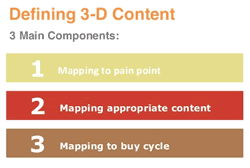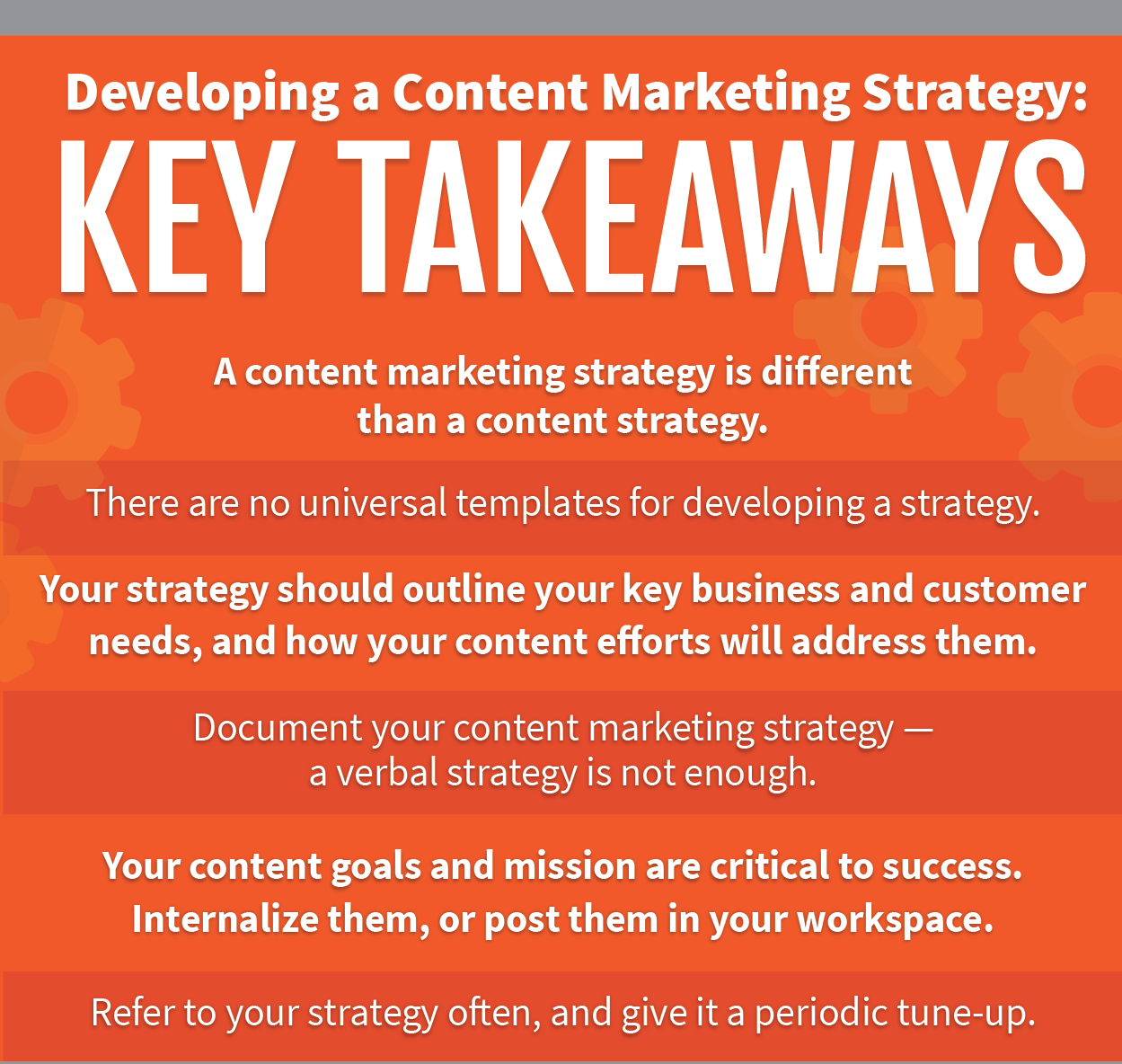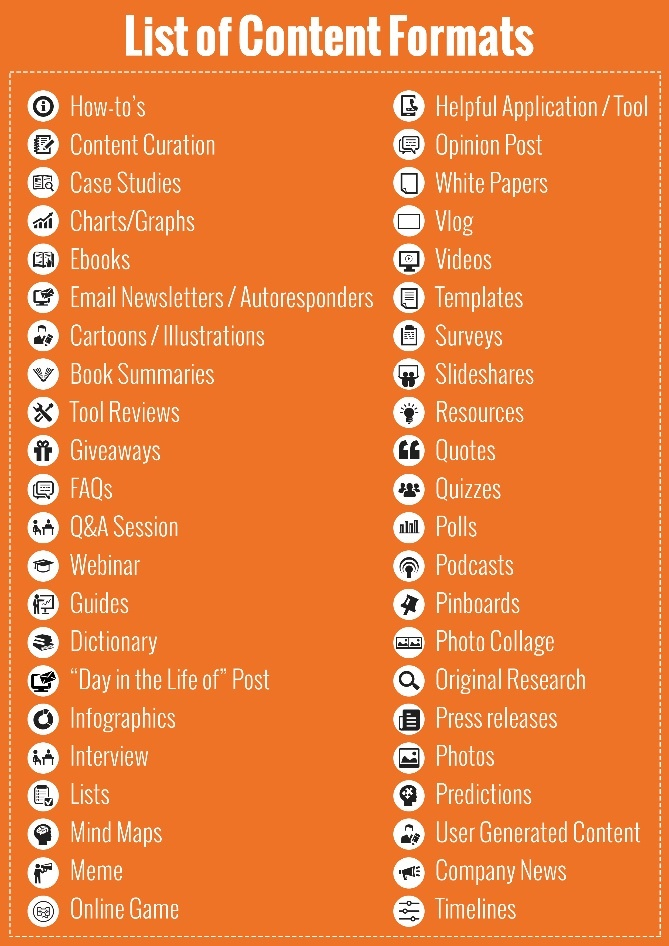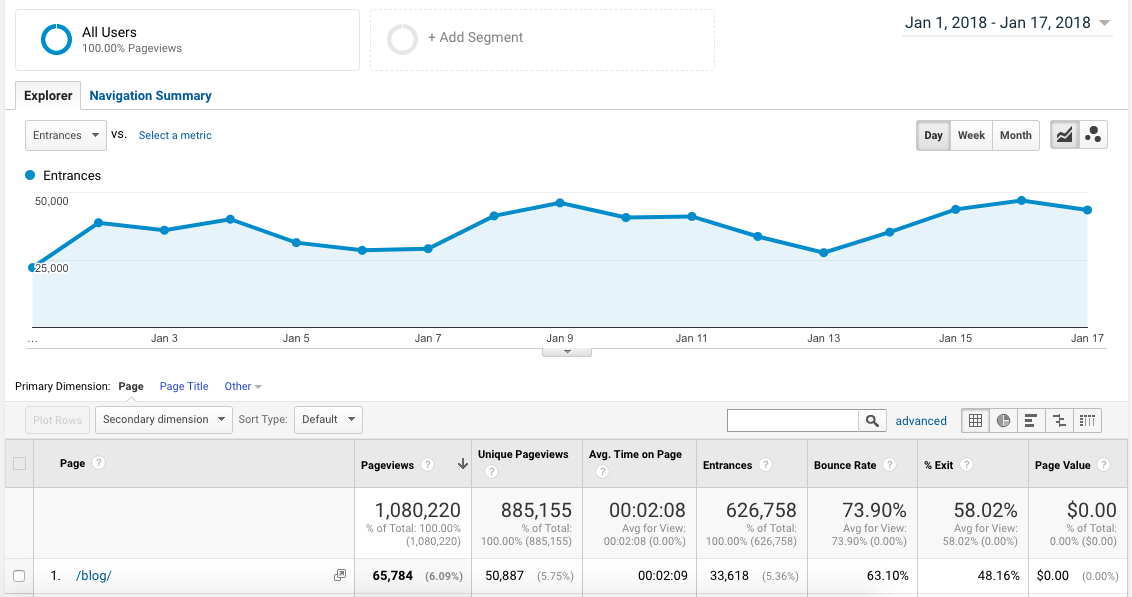What is Content Marketing? Some strategies of content marketing are.

… a strategic marketing approach focused on creating and distributing valuable, relevant and consistent content to attract and retain a clearly-defined audience — and, ultimately, to drive profitable customer action.
Their definition is solid in my opinion. But it could use some clarity.
It means that content marketing is a long-term strategy that focuses on building a strong relationship with your target audience by giving them high-quality content that is very relevant to them on a consistent basis.
Eventually, when customers make a purchase decision, their loyalty already lies with you. They will purchase your product and prefer it over competitors’ options.
In contrast to one-off advertising, content marketing shows that you actually care about your customers.
Today, more than ever before, people want to feel like you care about them. The world is louder and noiser than ever before, and attention is our most valuable resource.
Keep that in mind as we take a look at some of the different types of content marketing.
Strategy
Tons of different content marketing strategies exist today.
In the beginning of the content marketing world, that wasn’t the case. At one time, marketers had few options. They essentially only had bandit signs, magazines, and newspaper ads.
Even in those days, however, they had a variety of different custom choices.
They could play with the words in their advertisements, the picture they showed, the placement of it, and the CTA.
In other words, although there were few content marketing methods, the options were still remarkably vast.
Today, more content marketing mediums and methods exist than ever before in the history of the world. That means that the number of strategies is even greater.
One online publication suggests using the “3D Content” model, for instance.
Basically, it’s three individual steps.
-
Map the content to the pain point.
-
Then use the right type of content for that problem.
-
Finally, map the content to the buying cycle of the people who have that problem.

This strategy is a way to move the focus away from the marketer and to the person that the marketer is trying to reach.
That, after all, is an incredibly important step to take in your own content marketing strategy.
If your content doesn’t cater to the right people with the right problem that your product solves, then your content marketing efforts are all for not.
Of course, you’ll probably want to adapt this to fit your own audience and marketing theories.
Whatever the case, though, you should always start with your audience.
You must create content for that audience. Then, and only then, will the right people pay attention to you.
According to the source itself — Content Marketing Institute— here are the tips you should follow when creating a content marketing strategy.

Notice, in particular, this tip: “Your strategy should outline your key business and customer needs, and how your content efforts will address them.”
What does that mean?
It means that you need to understand your customers, prospects, and audience. Once you do, you can then create content that solves their problems and grows your business.
The ultimate goal of content marketing, of course, is to grow your business.
But again, you can’t do that unless you first attract paying customers.
In a world with social media, endless Internet space, self-publishing companies, and free graphic design tools, the strategies you can use to attract paying customers are as varied as the fish in the sea.
Here’s one list, for example, that Hubspot put together. It shows you just a few of the content marketing formats you can use.

There are a ton of options, but don’t get overwhelmed.
You’re here to learn about the benefits of each option and when to use which one. While there’s only one goal of content marketing (to increase business revenue), there are many ways to do that.
But before we can jump in and see how you can create your own strategy, you should first understand a bit of content marketing’s history.
Where did it come from? Why has it lingered? And why is it so popular today?
We’ll turn to those questions next.
A Few Extra Content Marketing Tips and Tricks
Before we dive into a ton of offline and online content marketing examples, I want to quickly show you a few necessary tips for your content marketing strategy.
It’s one thing to know what content marketing is, why it’s powerful, and even how to do it. It's quite another thing to actually know how to implement all of that information.
The first tip I have for you is to always pay attention to your analytics.
If you don’t know how your current content is performing, then you won’t be able to prevent blunders and iterate what’s working well.
Google Analytics will give you all of the necessary information.

The second tip follows closely to the first:
Once you know how all of your content is performing, run tests.
In particular, you can run A/B tests, which are remarkably powerful.
A/B testing is a way to test two pieces of content that are identical except for one factor. Maybe it’s the copy. Maybe it’s the CTA. Maybe it’s the title.
Whatever the case, A/B testing removes all the factors except for the one you want to examine, giving your test far more accurate results.
And it’s a great way to gather the information you need to iterate your current content marketing strategy.
As another tip, always keep your content schedule organized. Content marketers and creators are notoriously unorganized.
But that hurts your consistency and overall effectiveness.
Use a tool like CoSchedule to keep your content calendar in one cohesive location.

With an organized content schedule, helpful analytics, and regular A/B testing, your content marketing efforts will have a better chance of success.
After all, if you’re going to spend the time and budget on content marketing, you should make the most of it.



You must be logged in to post a comment.